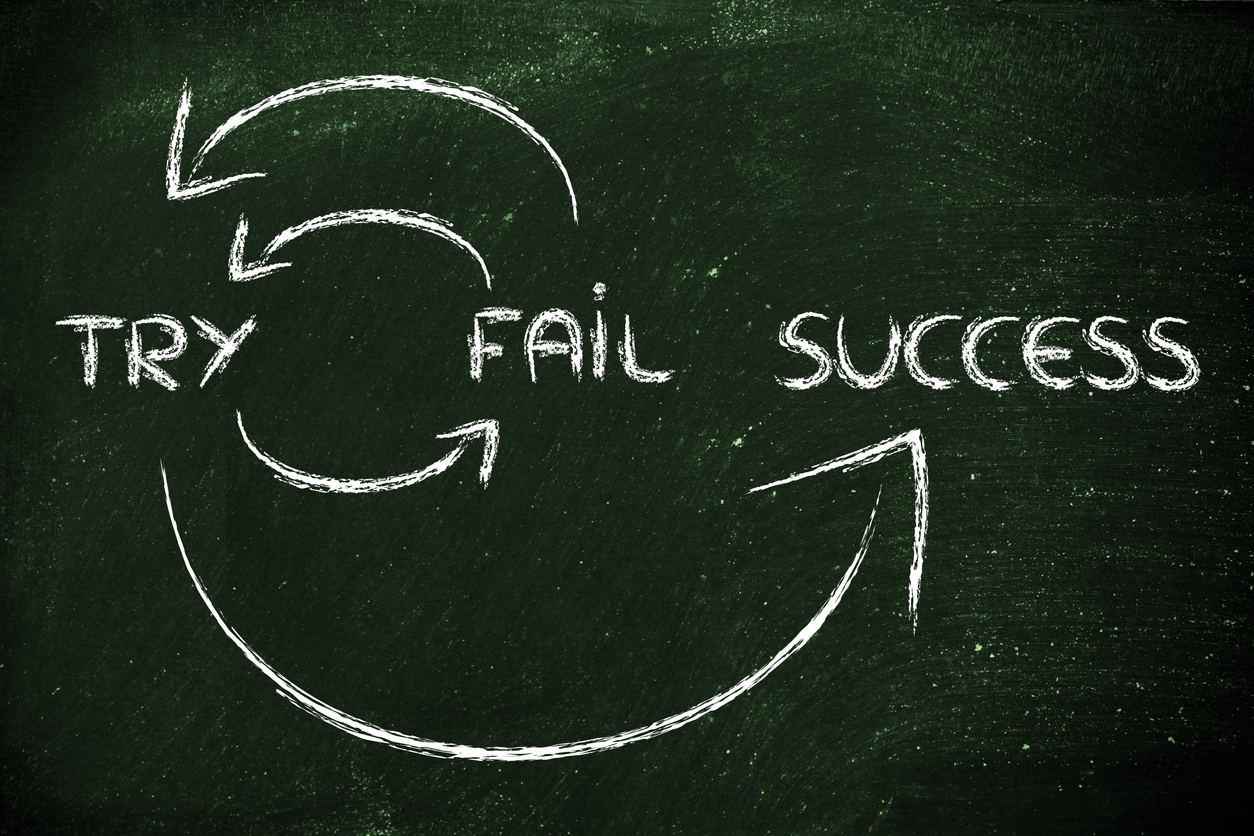What are sales techniques and which ones are most effective?
According to data from Vorsight, only 3% of the market buys, 40% is poised to buy and the rest are not. Selling is clearly difficult. However, the sales process is smoother when you have sufficient knowledge, use sales techniques, and understand the role of the salesperson.
Benoit Mahé, an expert in sales techniques, explains that it is essential for the salesperson to specialise, adding to their repertoire the ability to understand the needs of potential customers in order to also be able to offer advice. Basically, understanding customers' needs is vital. In fact, some 76% of customers expect companies to take their needs and expectations into account.
If you would like to learn which sales techniques work best and what to avoid during the sales process, let us explain all.
What to avoid when it comes to sales?
It’s important to know what steps should be avoided when it comes to sales, either because they're ineffective or because they can even create aversion to the product and even the salesperson themself. Some of these include:
- Making cold calls or contacts: this involves offering unsolicited information without even knowing if the potential customer is interested. Misuse of this sales technique causes an almost immediate rejection in many consumers, with the vast majority hanging up before listening to what's on offer. In this context, while in 2007 there was an average of 3.68 cold call attempts to reach a prospect, today it takes 8 attempts, according to data by TeleNet and Ovation Sales Group.
- Sending an unsolicited email: sending an unsolicited sales proposition by mail, whether physical or electronic, is considered junk and may damage the image of the company or seller.
- Requesting a meeting as soon as you strike up the relationship with the client: when potential customers agree to consider making a purchase, they need time to mull the decision over. So, by forcing a sales meeting too early, you're not allowing any time for this process. In fact, 80% of sales require a minimum of five calls as well as a meeting.
- Trying to force the sale as fast as possible by putting pressure on the customer: even if the customer is ready to buy, they like to feel like they are in control, and this type of approach will lead to rejection.
- Talking about the product without asking the customer questions: the customer wants solutions to their specific problems. They don't want to hear about all of the product features, but rather to what extent this product offers them solutions.

Which sales techniques are the most effective?
There are many different sales techniques, all developed by salespeople or institutions within the sales and business field. Some have been in use for decades already, others are more modern. However, when it comes to choosing one sales technique or another, the important thing isn't how old it is but what type of product or service you want to sell, as well as which sales channel will be used.
But for a sales technique to be successful, it needs to be designed around the interests and needs of the target clients, in other words, it must be customer centric. In fact, companies with customer experience are 60% more profitable.
Below, we outline the most popular and effective sales techniques for you.
AIDDA Method
AIDDA is the acronym of Attention, Interest, Demonstration, Desire and Action. Nowadays, this approach has been streamlined by skipping the demonstration phase, so the acronym is reduced to AIDA.
This method, developed at the end of the 19th century by the Alexander Hamilton Institute in the United States, is based on a procedure that adapts to the natural purchasing process of a product, from discovery to acquisition:
- Attention phase: the first step focuses on attracting consumers' attention to a product or service.
- Interest phase: once the consumer knows that the product or service exists, you need to work on increasing the potential customer's level of interest.
- Demonstration phase: you might want to include a stage to demonstrate how the product is used and the results of such use.
- Desire phase: once the consumer is interested in the product or service, the goal is to make them desire it.
- Action phase: the ultimate goal is to encourage the consumer to go ahead with the purchase.
SPIR Method
SPIR stands for Situation, Problem, Implication and Resolution. It is also known as SPIN, with the N meaning "need payoff". This sales technique consists of posing a set of questions tailored to each of the steps:
- Firstly, contextual or situational questions are asked. The aim here is to understand the potential customer and their situation to determine if the offer can address their needs.
- Next, questions about the problem need to be posed. These help the potential customer understand that they have a need that can be fulfilled, as well as helping to identify aspects that they might have overlooked.
- Thirdly, ask questions about implications, in other words, about the consequences of the problem. These tend to focus on the negative impact of problems and stress the importance of finding a solution ASAP.
- Lastly, questions of resolution or need for payment are raised. These questions need to be posed in a way that helps understand the value of a real solution.
AICDC Method
AICDC is the acronym for Attention, Interest, Conviction, Desire and Closure. It's also called the Percy method, after the name of its inventor, Percy H. Whitting, who described this method in his book The 5 Great Rules of Selling. In this approach, the phases of an effective sale are as follows:
- Attention: getting the attention of potential customers. It's important to draw attention as quickly as possible so that you can move on to the next phase.
- Interest: for this stage, the seller demonstrates how the product or service solves the potential customer's needs.
- Conviction: any arguments used to convince the potential customer are based around how the product solves their needs.
- Desire: to spark desire, you have to make the customer understand that the product or service addresses their problem or need.
- Closure: an overview is given of the reasons why the customer wants the product or service, to close the sale.
FAB Method
FAB is the acronym for Features, Advantages and Benefits. This method is ideal for any case where the final benefit is not clear or there are several features and benefits. It comprises the following stages:
- Description of the features: the distinctive attributes or aspects of the product or service are outlined. This is useful for anyone who doesn't know about or understand the product being sold.
- Talking about its advantages: this helps to understand the link between function and benefits, i.e., it provides context for the description of features.
- Presenting the benefits: an explanation of how the product’s functionality helps the customer, and what it can do for them.
The Sandler System
The Sandler system, developed in 1967 by David Sandler, is based on sellers acting as consultants rather than as pushy salespeople. This sales technique seeks to raise appropriate questions during the qualification process, instead of forcing the sale of a product to a client who might not need it. The Sandler system has seven steps:
- Establishing links and relationships.
- Initial contracts: it's important to establish some basic rules and create a comfortable environment for negotiations.
- Identification of pain points: identify weak points and the reasons why a product or service might help the potential customer.
- Budget: if a potential customer can't afford the product, there's no point continuing to sell it to them.
- Decision: it's essential to uncover all factors related to decision making. This means knowing when, what, where, why and how the potential client wants the sales process to progress.
- Closing: at this point, you present a product or service as the solution to the potential customer's problem.
- After-sales: the sale doesn't just end at closing, but with the establishment of the next steps to avoid buyer's regret.
Consultative selling
Consultative selling is a technique that focuses on the customer's needs. It seeks to build a long-term relationship rather than a short-term transactional one. Consultative selling techniques follow these steps:
- Preparation: a thorough qualification of prospects is carried out. This means doing everything possible to guarantee your product or service is suitable for the potential customer.
- Asking questions to get to know the customer: the goal is to understand their needs and create a good rapport.
- Active listening: this can provide the opportunity to offer useful ideas and tips.
- Authenticity: this involves sharing experiences and thoughts, being honest.
- Follow-up: this stage consists of getting customer feedback and providing information so that they can get the most out of their purchase.
Collaborative selling
Collaborative selling is about working with a customer to identify their needs and find an optimal solution for them. The key focus is on improving customer relations and enhancing the customer experience.
With this sales technique, salespeople need to focus on working together with the client, as this ensures the fair exchange of ideas and concerns in order to develop a win-win solution.

Effective sales techniques
Regardless of which sales technique is used, there are several strategies that can help to move the process ahead and close the sale:
- Storytelling: tell stories that support your sales pitches. This helps to engage with customers, empathise with them and create a laid-back, go-with-the-flow atmosphere.
- Helping clients to identify their weak points: not all customers are able to pinpoint exactly what their weaknesses or needs are. This is often because they haven't even thought about it.
- Introducing unconsidered needs: to back up the previous point, introducing a need that has yet to be considered can make the client open to thinking about situations they haven't taken into account.
As you can see, despite sales being difficult to seal, there are plenty of sales techniques and complementary strategies that make it an easier and more enjoyable process. However, apart from understanding these tools, it's vital to also possess certain soft skills such as empathy, creativity and active listening, to be able to accurately identify the customer's needs and build lasting rapport, thus making the whole process much more effective.
Do you want to develop professional skills that will help you access better job opportunities? Banco Santander is launching 5,000 Santander Course | Business for All 2024. This program, aimed at those who want to enhance their business skills, has been designed in collaboration with top experts from Harvard Business School Publishing, one of the most prestigious educational institutions in the world.
With this course, you will gain access to a 100% online, 9-week training program on which you will acquire the key know-how and skills to further your career. Depending on your professional objectives, you can choose one of the following courses:
Business Fundamentals: learn the essentials of marketing, finance, negotiation and customer experience.
Managing yourself: improve your skills in decision-making, time management and influencing without authority.
All courses are delivered by top-tier experts and are free to participants. And you don't need to have a degree or be a Banco Santander customer. On top of that, they are available in English, Spanish or Brazilian Portuguese.
You will have the opportunity to acquire all the necessary knowledge and skills via on-demand content, virtual discussions in live sessions with mentors and learning facilitators, interaction with your peers, exercises and tools with which you can practice, then transfer the knowledge to your workplace. In addition, upon completion, you will receive a certificate from Harvard Business School Publishing.
Are you over 18 and want to develop key skills to get ahead in the workplace? Sign up for Santander Course | Business for All 2024 and whether you get it or not, remember: never stop learning.
More posts to read...
-
 12/04/2024 | Santander Universidades
12/04/2024 | Santander UniversidadesGrowth mindset: examples in the workplace to develop the right attitude toward challenges
Card text -
 01/03/2024 | Santander Universidades
01/03/2024 | Santander UniversidadesThe sandwich technique: how to deliver criticism in an assertive way
Card text

